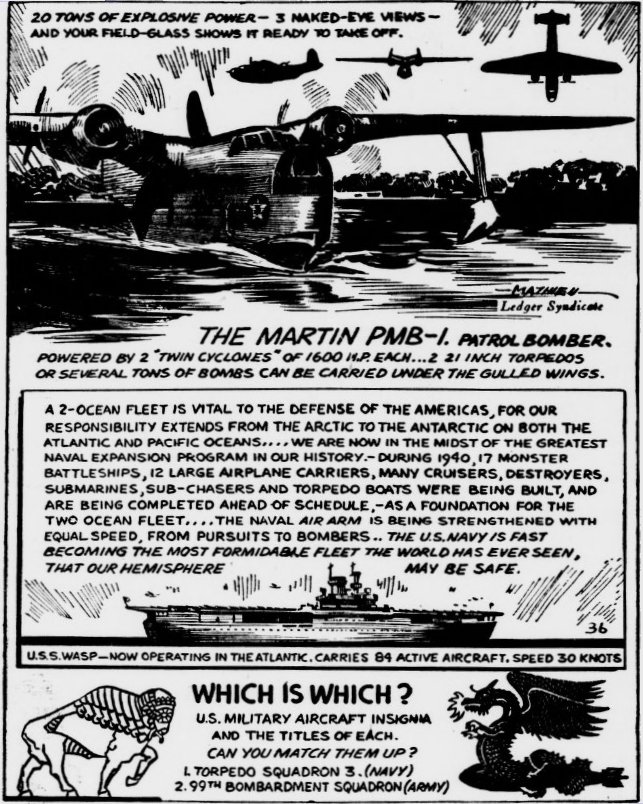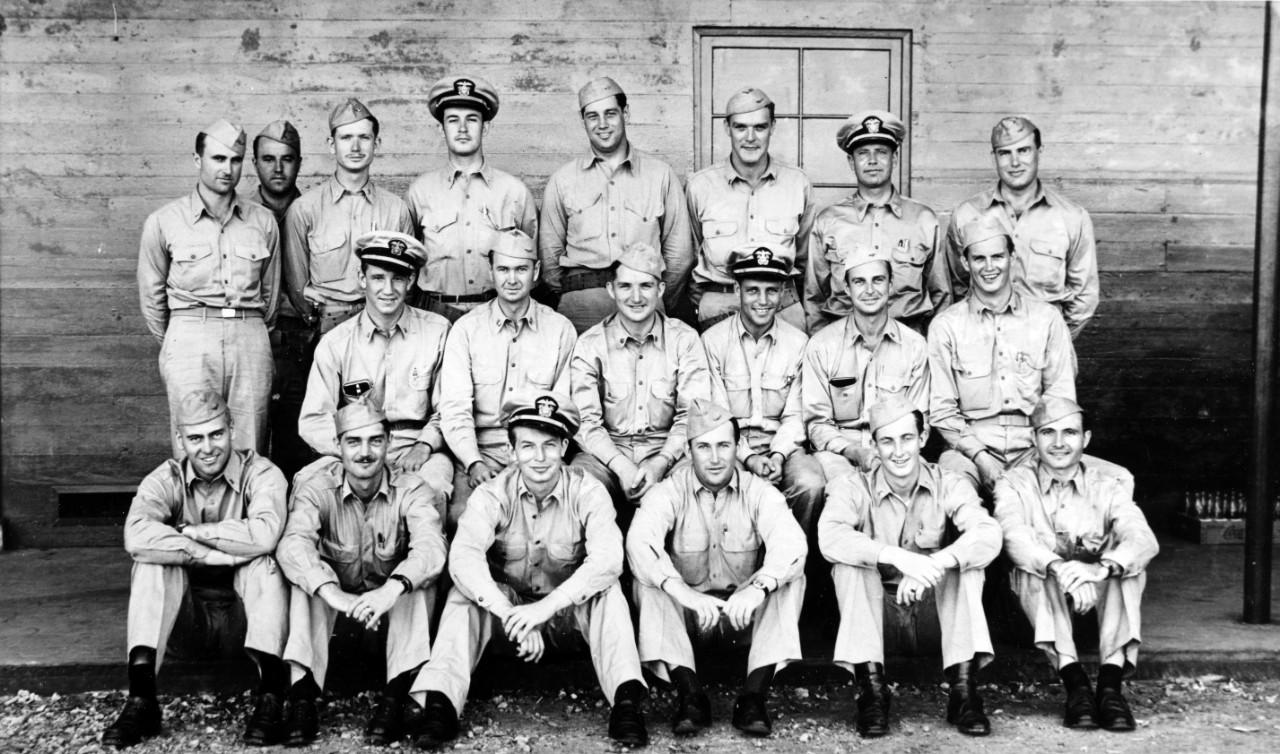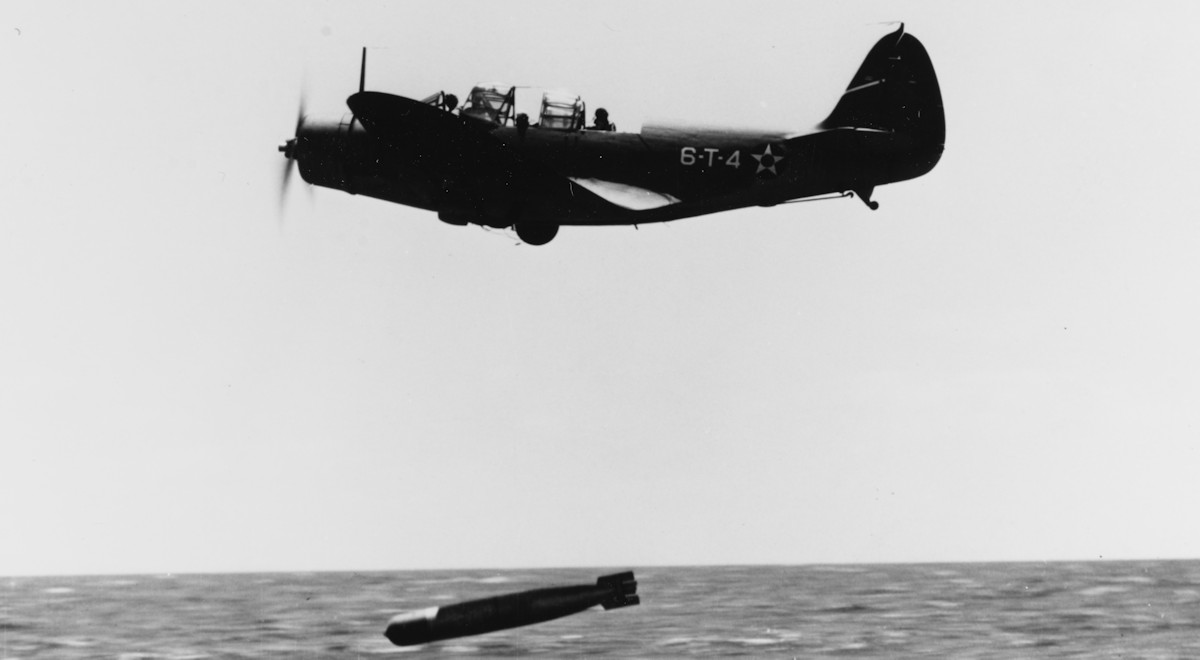Torpedo 3

The Martin PBM-1 Mariner featured a crew of seven and could carry two tons of bombs, depth charges, or two Mark 13 torpedoes. Eight .50-caliber M2 Browning machineguns protected the flying boat, which entered service in Sept. 1940. The Mariner was similar in size, payload, range and speed to the Consolidated PBY Catalina.
To answer to today’s quiz, Torpedo Squadron 3 (VT-3)’s logo is the dragon. On June 4, 1942 12 VT-3 TBD Devastator torpedo bombers took off from USS Yorktown to attack the Japanese fleet.
None of the planes made it back.

11 of the men in this picture are lost in one sortie.
Werner I. Weis is lost on Jan. 31, 1943… The airfield at China Lake Naval Air Weapons Station is named after Lt. John M. Armitage who was killed during a rocket test in August 1944.
Harry L. Corl and Wilhelm G. Esders piloted the only two VT-3 torpedo bombers to survive the Battle of Midway. When they returned to the American fleet they found Yorktown was under attack. The bombers were diverted to Enterprise but did not have enough fuel to reach the second flattop. Corl managed to ditch his plane next to the destroyer USS Monaghan. He and his gunner/radioman Lloyd F. Childers were rescued, but Esders ditched in the ocean ten miles short of Enterprise.
Just as Esders pulled himself and his grievously wounded radioman/gunner Robert B. Brazier into a liferaft, a Japanese dive bomber lined up to finish them off. Meanwhile, Lt. (j.g.) Arthur J. Brassfield, a Wildcat pilot with Fighting Squadron 3 (VF-3), spotted the Japanese warplane bearing down on the helpless Americans and attacked just in time, sending the enemy plane spiraling into the ocean. Brazier died of his wounds but Esders was rescued the following day.
Brassfield finished the war with 6.33 victories and would actually meet up with Esders when the two later served as instructor pilots in Florida. Esders retired as a commander and Brassfield a captain.
Esders and Corl both obtained their fathers’ permission to enlist in 1934. Esders attended flight training in 1937 and was one of the pilots in the 1941 Warner Bros. movie “Dive Bomber.” Corl in 1939. Corl was piloting a TBF-1 Avenger during the Battle of the Eastern Solomons when he was lost on Aug. 24, 1942.
Childers entered pilot training in 1945 and flew combat missions during the Korean War as a Marine aviator. He later became a helicopter pilot and commanded Marine Medium Helicopter Squadron 361 (HMM-361), where he led the first nighttime helicopter operation in a hot landing zone during the Vietnam War. He retired as a lieutenant colonel in 1968.
